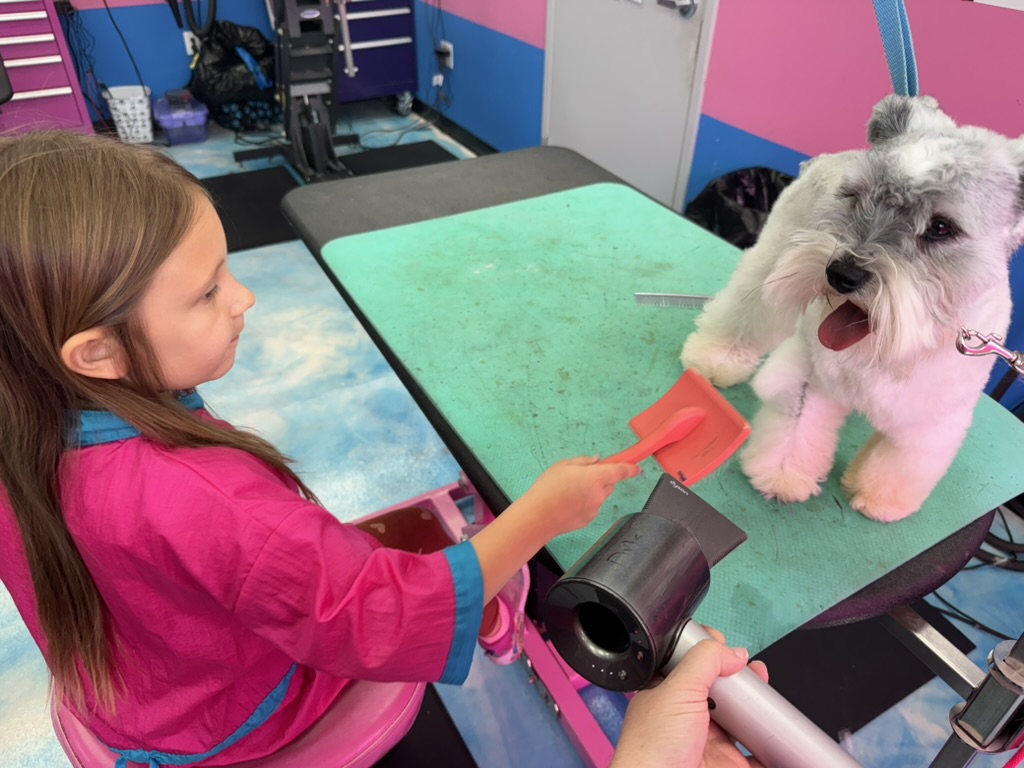
Brushing Your Dog: More Than Just a Beauty Routine
By Misty Gieczys
September 3, 2024Brushing your dog is often seen as a way to keep their fur looking its best. While it certainly helps with that, it’s actually so much more than a beauty routine. Regular brushing offers a wide array of benefits for both your dog’s physical health and your bond with them.
Benefits Beyond Looks:
- Minimizes Shedding: Let’s face it, dog hair can take over your home. Brushing helps to remove loose fur before it ends up on your furniture, clothes, and floors.
- Prevents Mats and Tangles: Mats can be uncomfortable for your dog and even lead to skin irritation. Brushing helps to prevent these painful tangles from forming, especially in long-haired breeds.
- Distributes Natural Oils: Your dog’s skin produces natural oils that keep their coat healthy and shiny. Brushing helps to distribute these oils evenly, promoting a lustrous coat.
- Improves Skin Health: Brushing stimulates blood circulation to the skin, which can promote healthy skin and a strong coat. It also helps to remove dirt and debris that can irritate the skin.
- Early Detection of Issues: Brushing allows you to get up close and personal with your dog’s skin and coat. This can help you to spot any potential problems early on, such as fleas, ticks, lumps, or skin irritations.
- Bonding Time: Brushing is a great way to spend quality time with your dog and strengthen your bond. Many dogs find it relaxing and enjoyable.
Brushing Tips:
- Choose the Right Brush: The type of brush you need will depend on your dog’s coat type. Slicker brushes are great for removing mats and tangles, while bristle brushes are good for short-haired breeds. Consult a groomer if you’re unsure which brush is best for your dog.
- Start Early: Introduce your dog to brushing early on, so they get used to it and learn to enjoy it. Start with short sessions and gradually increase the duration as they get more comfortable.
- Be Gentle: Always brush gently, especially around sensitive areas like the belly and face. If you encounter any mats, be patient and work them out slowly to avoid hurting your dog.
- Make it Positive: Use plenty of praise and treats during and after brushing to create a positive association. This will make your dog more likely to look forward to future brushing sessions.
- Regularity is Key: The frequency of brushing will depend on your dog’s coat type and lifestyle. In general, most dogs benefit from brushing at least once a week.
Remember, brushing is an important part of responsible dog ownership. It’s not only about keeping your dog looking good, but also about ensuring their health and happiness. By making brushing a regular part of your routine, you’ll be doing your furry friend a world of good.
